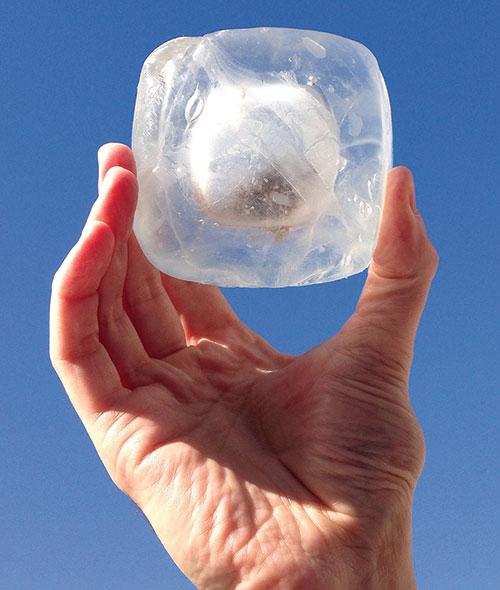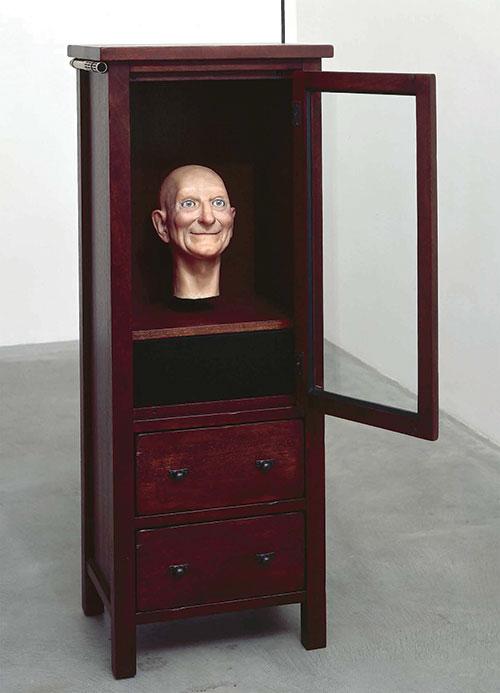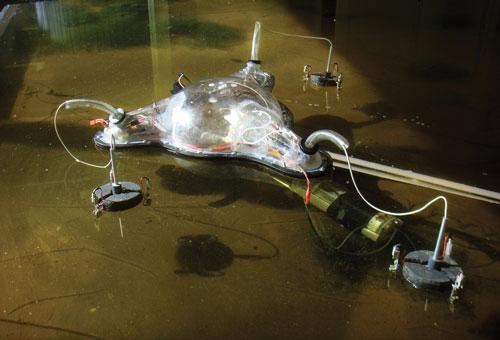
Cultural Jewels celebrates shell necklace maker, Lola Greeno's naming as the eighth Living Treasure in the Object: Australian Design Centre’s Masters of Australian Craft series. Greeno is the first Indigenous artist to be named in this series and, indeed, the show marks another significant step in recognition of cultural resilience: where intersections of innovation and tradition are important structural joists.
Greeno’s artwork and lifework are distinguished by a constant exchange between family and community. Fittingly, it is the discrete videography by Julie Gough that provides an enduring image of Greeno, knee-deep in a Flinders Island bay, harvesting by hand the tiny shellfish used for maireener necklaces. From another wall-mounted video, Greeno’s voice, describing the process of making (the rotting out, the slurridge, the stringing), is a reminder that these adornments are often made in and amongst a collegial atmosphere of conversation and teaching.
In response to changes in available resources, Greeno’s more recent works use new materials, or familiar materials in sturdier, contemporary manifestations. Then, the possum was a source of ligature on which to thread the shells. Now, the possum fur is reshaped into potential ceremonial adornment in a stack of possum-fur armlets. Some, as Greeno notes in the comprehensive monograph that accompanies the show, are almost unwearable neckpieces. They are sculptures for the body that deftly align warrener shells, scallop discs, casuarina apples and echidna quills. Their contradiction enhances their function as narrative-makers, co-created as the necklace takes form. The stringing is not only of materials, but a repeated pattern of experimentation within a cultural structure. How many patterns can be made out of a limited palette? And what is the solution to a palette that is diminishing? The preciousness of the maireener necklaces increases, for example, Teunne (King Maireener shell crown) (2013), as the availability of the material reduces.
Greeno’s remarkable skill for finding the way between materials so that they draw into each other seamlessly is evident throughout the exhibition. Not least in the striking Teerunna neckpiece (2012), where kangaroo vertebrae jostle together, sequentially displaced but bound by accents of ochre. The delicacy of skill transfers readily between the finer traditional species to the more robust contemporary materials. It also invites curiosity to know how the contradiction of delicacy and robustness would behave on an imaginary, moving body. A response in part to the neckpieces’ placement in protective travelling cases, each sewn firmly, yet invisibly, into position. There is no room for movement.
This restriction is, however, understandable given the exhibition’s twelve-site itinerary. The travel ahead is also reflected in the design premise of the cases and layout that supports such locale-referenced works. The cases’ easel legs, their varying heights and dimensions and the clustering of these structures, creates a distinctive feel of moving through a vegetated landscape: a throng of coastal casuarina, or tussocks of sagg. The precariousness of the tripods appropriately creates a low hum of concern around the fragile works that they support and frame.
Lastly, there is a particular joy in the language of this exhibition derived from the plaiting of scientific names and palawa kani titles together with the shells’ common names from traditional use: cat’s teeth, grey gulls, black crows, oats, penguin cockles, white cockles, warrener, maireener. As the processing and making techniques have been passed on, so have these names, assigned to the shells by women who are Greeno’s immediate family by blood and marriage. Similar to this process of passing on, while sitting in the space (and close to the source of the material), fellow attendees would approach, each with a phrase or anecdote or place that they had found. It was an immediate demonstration of not only the storied nature of the exhibition, but our inclination to seek and share those stories with each other.












